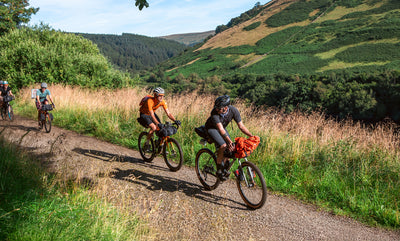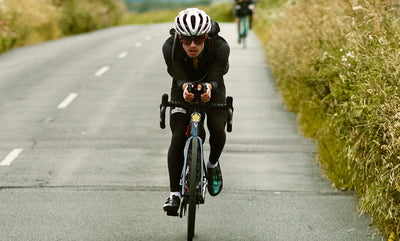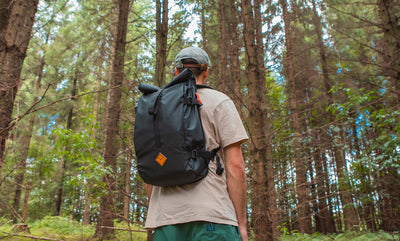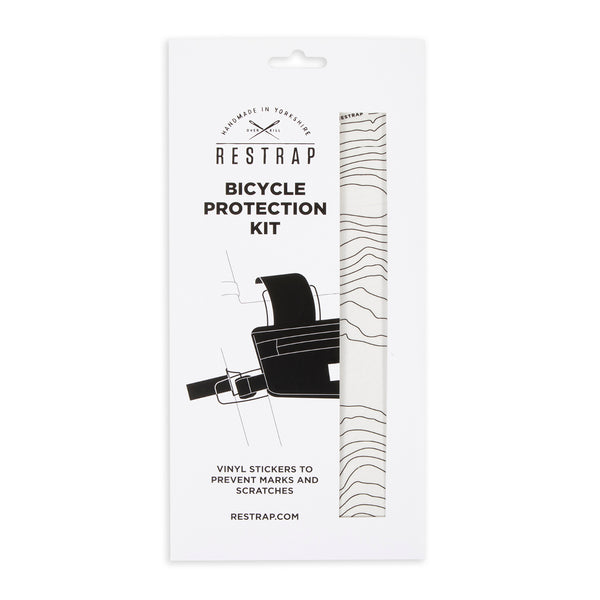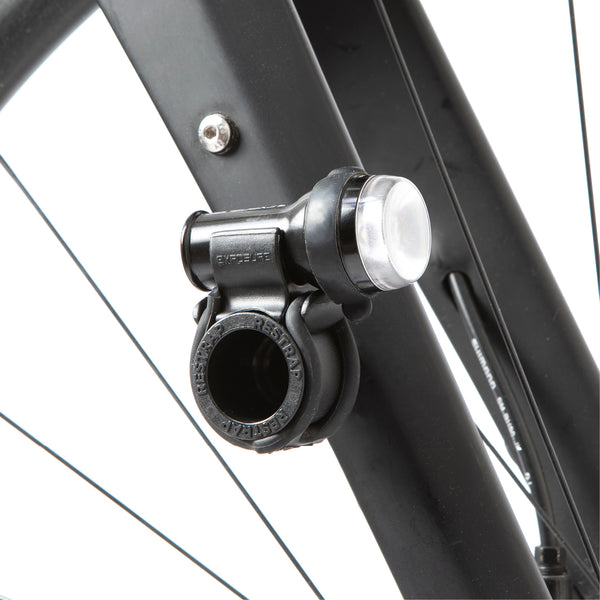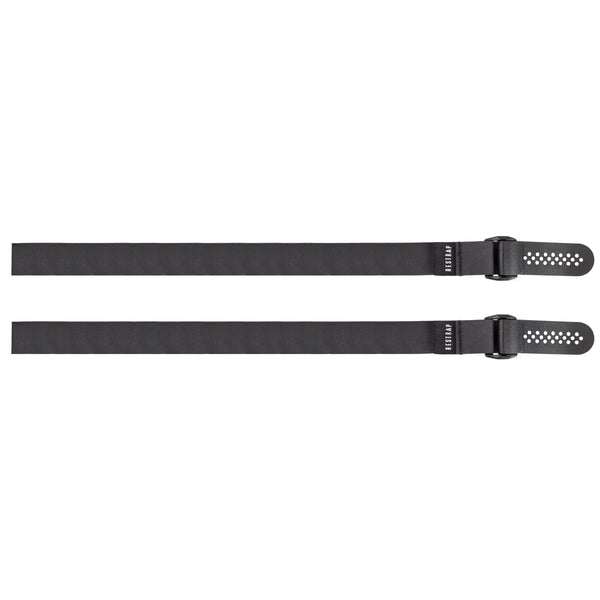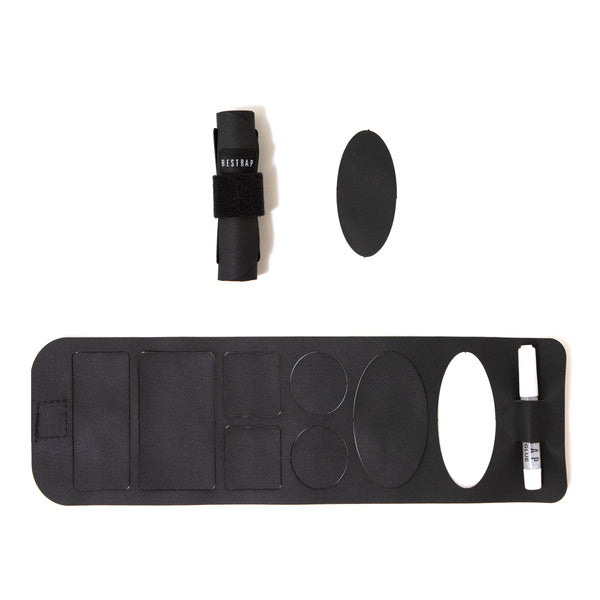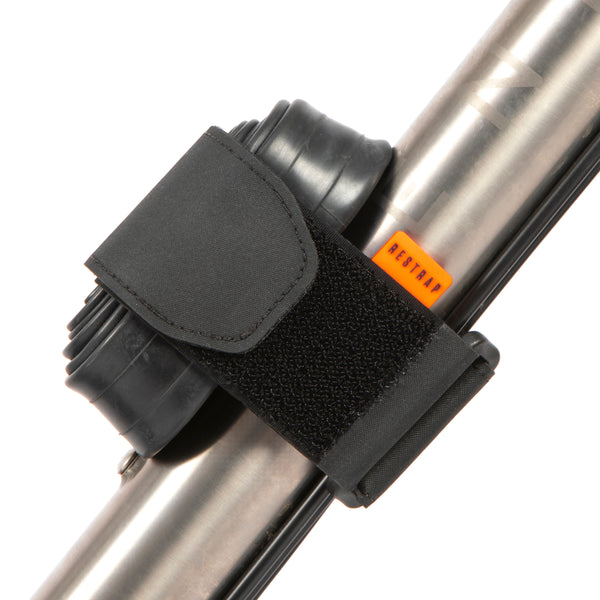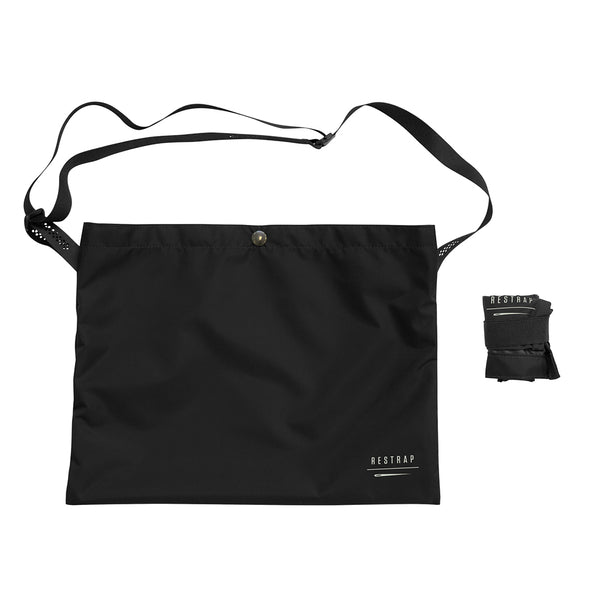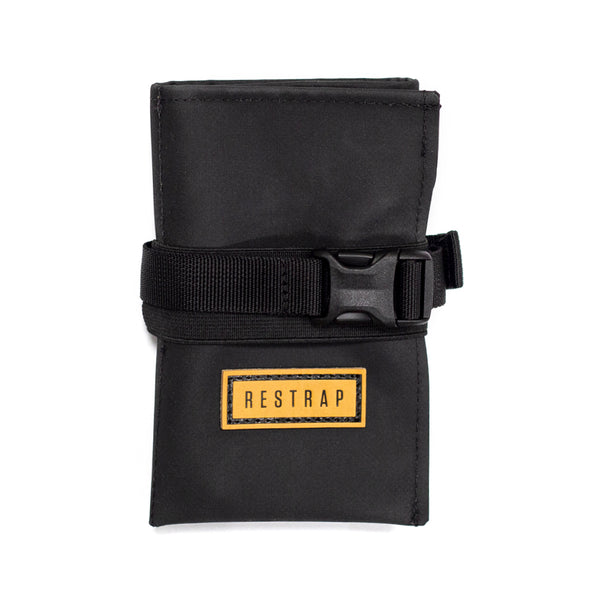Your cart is empty!
The Outside Life: Racing the AZT800 as a father and son pair

Restrap ambassadors and father-son team of Rich and James Rothwell have just returned to the UK after their epic adventure on the Arizona Trail Race. The AZT800 is a gruelling south-to-north 800 mile self-supported mountain bike race. It’s an incredible achievement for anyone to complete, let alone a 13 year old. James was officially the youngest rider to have ever completed the race.

We caught up with them both shortly after finishing to find out a little more about what it takes to complete the epic route. From high temperatures and cactus thorns to snow and surviving on squashed M+Ms, they gave us the full low down…
Restrap: How did you first find out about the AZT800? What drew you to this race in particular?
Rich: I first became aware of the AZT800 when I completed the Colorado Trail Race several years ago. I guess that back then I knew that I wanted to do it. I love distance and I love proper mtb terrain and the AZT800 has both! Of course the mystique of the Grand Canyon [which the route passes through] pulled me in. Moth to a flame type stuff!

James: My dad told me about it. After we completed the Highland Trail 550, we wanted something bigger and tougher and I had always wanted to go to America. I love a big target and trying to complete hard things.

Restrap: The race is known for being hugely physically challenging. How did you prepare for it?
Rich: After years of long distance endurance riding, I knew my aerobic engine was in a good place. I didn't do loads of long rides ahead of AZT800. As a coach and experienced long distance rider, I knew that the strength aspects were very important to work on so I spent a significant amount of time on this. Besides plenty of hike-a-bike and tech trail riding, I spent quite a lot of time in the gym working on the specific strength requirements of the hike-a-bike and of course THAT carry through the Grand Canyon! [more on this later] Loads of lunges, squats, and time on the stepper with weight on my shoulders!

James: Like my dad, I did some long rides but did more strength stuff. I went to the gym a lot. I did lots of trail riding. I play rugby and I think that made my legs stronger.

Restrap: How were you feeling when you lined up at the start? What were your biggest fears and what were you looking forward to the most?
Rich: To be honest, I did not have a lot of time to think before the start. I was jet lagged and tired and, true to form, made the dawn start line with two minutes to spare. I guess my biggest concern was the water situation. The south was very hot (for us at least) and I knew we would have vast stretches where we would have to find and carry 5 or 6 litres of fluid. I was just generally looking forward to the whole thing; it could not be any more different to my home of Northumberland! Of course, the Grand Canyon was a huge draw, but in the early stages, we just did not know if we would even get that far!

James: I didn't really have any fears. A slight feeling of trepidation but mostly excitement. I was most looking forward to the Grand Canyon! Little did I know!

Restrap: What was your strategy before the race? Did you stick to this once you started? Was there anything that you had to change?
Rich: We started off by stopping riding mid-evening and getting up very early. This way, we got more time riding in the cooler hours of the day. It also worked with the remnants of jet lag! As we got further north, and the temperatures dropped, we rode further into the night and tried to get up with the warmth of the sun.

Despite being an incredibly capable and tough boy, I was obviously always mindful of James's age. The most important aspect of strategy was safety and restraint when faced with uncertainty as I was responsible for my son. He is experienced beyond his years, but he couldn't imagine the isolation we would face before we started. He learned pretty quickly! Often, we had to be reserved, and wait for the right time to keep moving. Other times though, we had no other option to go for it and get a section done; these were big adrenaline moments!

James: Me and my dad talked things through as we went. We had to change our strategy as we went. That was fine.

Restrap: What was it like riding as a father/son pair? How did you look out for each other?
Rich: We have spent so much time riding together that it felt like business as usual! We never ran out of anything to say as there was so much to look at and talk about. We loved talking about the plant life, the animals, and the American culture we were experiencing. We always discussed decisions that needed making, even though sometimes I had to override James's desire to keep moving forward all the time! It was very rare that James struggled physically, which made things much easier to manage.

James: It felt like normal. We made sure that we split our food evenly and we both carried all our own kit. We tried to keep each other company and cheer each other up if we felt tired or worried.

Restrap: You had some pretty extreme conditions on the trail. What was it like out there? What was the hardest to deal with?
Rich: Arizona can hit you with some huge temperature swings. We are both pretty good in the heat and despite highs of 105ºf, provided we had enough water, we coped well. We also had to deal with some extremely low temperatures; one night we had to sleep in the open desert in 14ºf. This was perhaps our most uncomfortable night and stretched our kit to the absolute limit. However, the most hazardous weather was one evening when we were approaching Mormon Lake. The cloud had been building all day and early evening we were hit by torrential freezing rain. It was classic hypothermia conditions and we were very lucky to be near a town. Arizona has virtually no shelter in the backcountry: no sheds, derelict buildings, or refuges. If we had been hit by this weather earlier in the day, it would have been a very difficult situation. When we left the north rim of the Grand Canyon, we were also hit by heavy snow; we set off in the morning and had to use a road detour but it was still extremely cold and at times even the road nearly became a hike-a-bike.

James: The hardest thing to deal with was the cold heavy rain at Mormon Lake. It was just above freezing. My hands went blue and I couldn't feel my feet. There was nowhere to shelter until we reached the small town and got shelter in a very kind man's house.

Restrap: Did you have any real low points where you thought you wouldn’t be able to finish? How did you get through them?
Rich: Almost all the time, despite the difficulties, we were convinced we would finish. Perhaps our only really low point was the night we arrived at Flagstaff. The weather had got significantly colder and we faced a 105 mile stretch around the shoulder of Mt Snowbowl and across a barren desert to Tusayan. There was no way that we could make that hop in one go so we knew we would have to sleep in the open desert, in 14f. After that came the Grand Canyon with significant snowfall in the forecast. It just felt too hazardous to continue without full winter kit. We went to bed that night feeling pretty low, convinced that we would have to scratch the next day. After some sleep, we perked up and went to the consignment store (second hand outdoor stores; a brilliant American concept). We bought balaclavas, extra gloves, and extra thermals. Despite being nervous (we were right to be!) we set off after lunch and endured the coldest conditions of the trip. As uncomfortable as it was, we got through the night and only then had the snow of the north rim to worry about!

James: At Flagstaff we saw no way of carrying on because the forecast was minus 10 and there was snow forecast for the north rim of the Grand Canyon. There was no shelter for a long way and we did not think our clothes would be suitable.

Restrap: How did you manage your food and drink? What was the best meal you had? What was the worst?
Rich: With the terrain between resupply being so slow, food in particular was a real challenge. Also, some resupply points had limited opening hours and this caught us out a couple of times. Twice we had three day stretches without resupply. We got down to eating straight peanut butter, trail mix, and squashed fig rolls. At any point though, James could have told you exactly how many calories we had left and what the ration portions needed to be! Squashed and melted peanut butter M&Ms were particularly disgusting but all got eaten! After two days with no proper meal, we pulled up in Tusayan for an amazing Mexican meal. This was well timed as we had to face the Grand Canyon the next day.

We used the excellent and invaluable FarOut app which is offline GPS enabled and pinpointed water points (amongst many other useful things). It was also user updated and often highly amusing! The story of a guy pitching his tent on a rats nest was way funnier than it sounds. Collecting and carrying plenty of water in the south was critical and most of the time we had to carry 5 or 6 litres at a time but the water demands eased in the cooler north.
James: We had quite a few bad meals! Peanut butter M&Ms were horrible but we ate them! We split all our food evenly even if it was the carb powder for breakfast. The best meal was Dirty Eggs at Rocking K because we hadn't eaten properly for two and half days.

Restrap: One of the most feared sections of trail is the Grand Canyon. How did you find it?
Rich: Nothing quite prepares you for the first time you see the Grand Canyon! It is mind blowingly huge! It's so spectacular that it just doesn't look real! It is also extremely intimidating as the compulsory hike-a-bike is notoriously hard and the task stretches below you and into the far distance. We stood on the south rim feeling excited but very apprehensive. For 21 miles you must carry your disassembled bike on your back (rules of the Canyon authority and I fully agree with this rule). On the way down to the Colorado River crossing, you must negotiate steep steps and tight switchbacks. Your back and quads burn as you battle for balance. We reached Cottonwood Campground (a permit only Canyon campground) at 3am, completely exhausted. It took us most of the next day to drag ourselves up the north rim. Something neither of us were ready for is how treacherous the Canyon can be! The narrow trail often has overhanging cliff edges rearing up on one side and huge vertical drops on the other. Our bikes often banged off the cliff walls as we battled to balance and inch forward whilst avoiding the frightening drops. Progress was incredibly slow. Every step hurt. Distance and time seem to stand still as you crawl forward. It was by far the hardest physical test I've ever undertaken. How James did it is beyond me. We finally crawled to the trailhead as darkness fell along with the snow and the temperatures. Rather than continue into a freezing night, we got into a pit toilet and crawled into our sleeping bags. We awoke to deep snow on the north rim. Our legs felt like lead and our calves were painful to even touch. On reflection I'm amazed that we did it, but there is no way out of the Canyon other than by using your own power.

James: When we first saw the Grand Canyon I felt amazed. But I also felt anxiety because I knew I had to walk through it with my bike on my back. It was surreal. I didn't know if I could do it, even half a mile in. My back was giving in. My knees were shot. And we still had twenty miles to go. I nearly turned around then but I kept going into the night and eventually collapsed into my sleeping bag at Cottonwood campground. I thought the downhill was the harder bit but the climb out was incomprehensible and meant I had to step up two feet steps of eroded stone and I didn't think I could carry on. I limped to the top totally exhausted.

Restrap: Even after that ordeal, it wasn’t plain sailing. How did it feel to finally reach the finish?
Rich: After the Grand Canyon, significant snow had fallen overnight. As the trail was buried, we were told to take the road detour over the high ground. Even that was not straightforward at points. The snow almost became deep enough to have us off our bikes and hiking. We could have ridden through to the finish that day but it would have meant another night sleeping in the open with no warm food. So we finished late afternoon and stopped at the amazing Jacob's Lake Motel. What a brilliant place! An old original trading post, it had a big log fire, super friendly staff, and delicious fresh food. Recommended! This was definitely a good move! The next day was a straightforward 30 miles, and as we dropped down the fantastic final descent to warmer air it just felt calm and relaxed. We knew the last thing that could have stopped us was the Grand Canyon and that last stretch to Utah state-line just felt like a well earned warm down and time to reflect on a massive adventure.

James: The end felt like Jacob's Lake as we felt we had accomplished all the hard things. At the end I felt happy it was over but sad because I knew I would soon return to a normal life. I also felt very proud of what I had achieved.

Restrap: Amazing guys! Now some quick fire questions.
Favourite section of the route?
Rich: So hard to remember as it was just a blur of huge climbs, fast descents, and slower tech trails. There was so much good singletrack that it was hard to pick anything in particular. However, the sweeping relatively non-technical descent towards Tuscon on day three was magic. The sun was rising and outlined the huge Broadway cactus as we cruised downhill for miles to Rocking K for a fantastic hot breakfast. Highline Trail was also a highlight as it had just been opened before we arrived, following a forest fire. Singletrack weaved through charred trees and ash coated the ground like light snow. It was eerie, otherworldly, and really atmospheric.

James: Lots of amazing bits of trail! Maybe my favourite was dropping down from The Four Hills. We had done loads of hike-a-bike but then the trail got really fast and swoopy and then really steep. Once we crossed the road, we went super fast to Jake's corner for a big burger. It was a great afternoon. I also liked the final descent to Utah. It had loads of corners and was super fast. Sometimes I went too fast but it didn't matter!
Best and worst nights sleep
Rich: Some of the best nights were in the south, lying in the desert with a spectacular sky full of stars. The desert is so quiet and peaceful and I wouldn't have taken a bed if you'd offered it to me! The north was a different story.... the night that we spent in 14ºf was by far the most uncomfortable night and I'm not even sure if we actually slept. It made the night in the pit toilet feel like a hotel room.

James: The best night was at Jacob's Lake in a huge bed with white sheets and loads of pillows! The worst was definitely sleeping in the desert in 14ºf. My feet hurt all night and I shivered. There was ice on my sleeping bag and balaclava. It was horrible.
Best bit of kit
Rich: Having two water bottles easily to hand with my Race Stem Bags was really useful. My Race Saddle Bag was also a fit and forget item as it held the bulk of my sleep kit out of the way until I needed it. An insulated Sea to Summit sleeping mat was a last minute addition and that really helped us through the extremely cold nights. Oh, and my Leatherman Skeletool got a lot of action, pulling out cactus spikes, (from tyres AND skin!) as well as being the kitchen cutlery for the route!


Anything you didn’t use?
Rich: I used pretty much everything that I carried. Fortunately though, we didn't use any of the inner tubes!
James: We used everything. I brought sun glasses and I wish I hadn't. They got dirty and covered in sun cream.
Anything you wish you had brought?
Rich: The things we didn't have, we managed to pick up on the way. Namely, warmer gloves, more thermals, and balaclavas. It's a tricky one as the temperature differences between the south and the north are so extreme. Would carrying more stuff from the start have been quicker and easier? I'm not sure.















